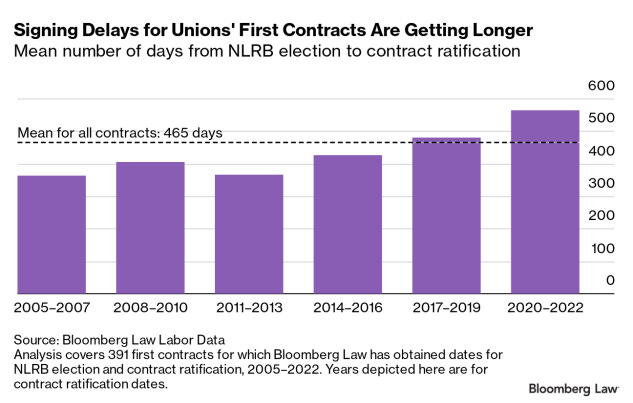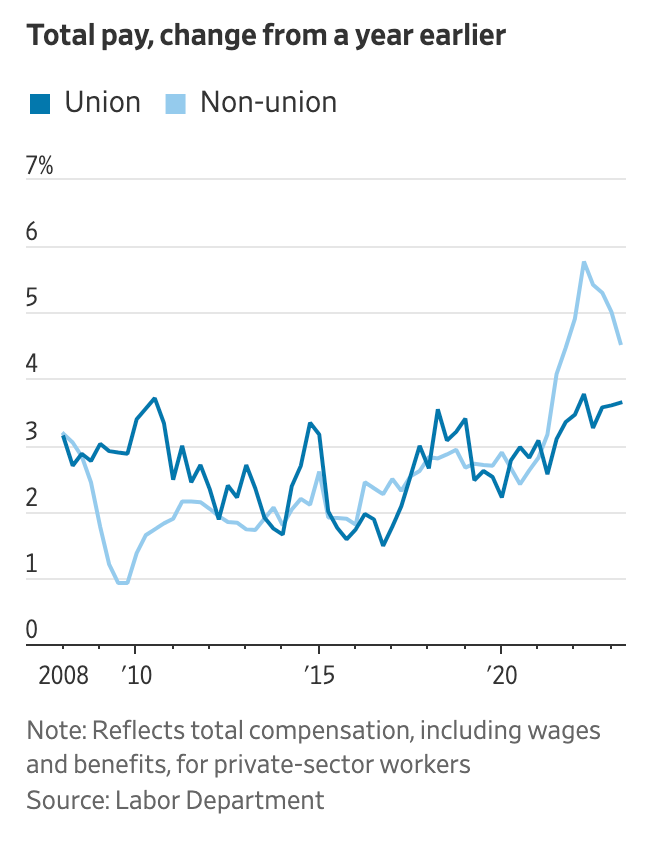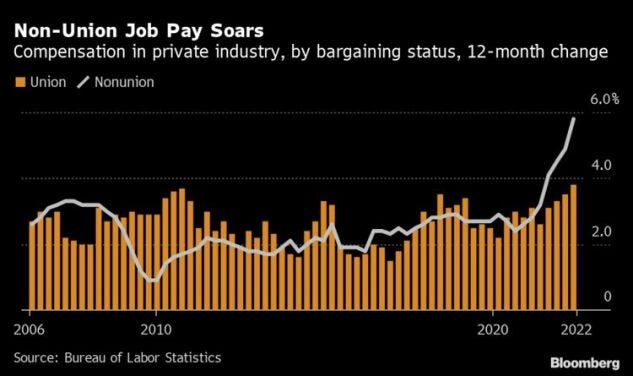The AFL-CIO is opportunistically spinning pay data to mislead workers into unions.
Unions negotiated higher pay increases in 2023 than in years past. However, there is much more to the story.
“‘Spin' is a polite word for deception. Spinners mislead by means that range from subtle omissions to outright lies.” — Kathleen Hall Jamieson
An article on Tuesday, by Bloomberg Law’s Robert Combs touted “sky-high” pay raises won by unions in 2023 negotiations. Swiftly seizing upon this data, the AFL-CIO made the bold claim, “this could be you,” on X (formerly Twitter), implying that workers could enjoy similar wage increases if they merely joined a union.
While these wage hikes may seem impressive at first glance, the AFL-CIO's exploitation of the statistics to push their agenda is nothing short of misleading. The reality is that the road to these pay increases has been long and less than smooth.
Data from the same Bloomberg Law writer who penned this week’s eye-catching article revealed in 2022 that it was taking 465 days to reach a first-time agreement. Additionally, there have been hundreds of union wins in recent years that have failed to translate into contracts at all (see Amazon Labor Union, Starbucks Workers United, Trader Joe’s United, among others, for example).
Yes, union contracts negotiated in 2023 did provide an average first-year wage increase of 6.6%, the highest since 1988. In fact, when factoring in bonuses and lump-sum payments, this figure jumps to a record-breaking 7.3%, according to Bloomberg Law. However, there is more to the story.
The AFL-CIO conveniently overlooks the fact that union workers fell behind their non-union counterparts during the pandemic, and many agreements in 2023 merely caught up to what non-union workers had already received.
“In some cases,” the Wall Street Journal noted last year, “the unions’ latest gains just catch up to pay increases that nonunion Americans landed since the pandemic hit the U.S. economy in 2020.” [Emphasis added.]
Even Bloomberg’s Daily Labor Report stated in 2022: “Overall, total wage and benefit costs for private-industry firms increased 5.5% in the year ended in June, but pay was stronger for workers not represented by a union.” [Emphasis added.]
In 2022, “wages and salaries for non-union workers rose 6%, the most in data back to the early 2000s, compared to 3.4% for those in unions,” the publication noted. [Emphasis added.]
Even the pro-union publication Labor Notes further clarified the unions-are-catching-up point in December:
Many of the contracts expiring next year date from before the pandemic, and before inflation started taking a bite out of paychecks. Some unions took concessions, like creating lower wage and benefit tiers, that members are ready to fight to undo this time around. [Emphasis added.]
Moreover, while first-year increases in union agreements were high in 2023, in many contracts, subsequent years have lower raises—a tactic known as "front-loading."
In fact, Bloomberg addressed this point last year under the headline UPS Says Union Deal Raises Wages and Benefits by 3.3% a Year:
The front-loaded labor contract will cost about $500 million more than UPS expected in the second-half of this year, Newman said. In the three subsequent years, the wage increases cool considerably before rising to about a 5% jump in the fifth year. [Emphasis added.]
One other interesting point within the Bloomberg Law article on Tuesday was the rise in government union-wage increases. Comb’s stated:
Government union contracts traditionally contain lower annual pay raises than those in the private sector, and 2023 was no exception. But the government sector was where the largest year-over-year change took place, rising from 4.1% in 2022 to 5.5% in 2023. Meanwhile, the wage acceleration was not as fast in nonmanufacturing (from 6.8% to 7.5%) and manufacturing (from 5.4% to 5.8%).
“It’s conceivable that by the end of this year,” Bloomberg’s Combs wrote, “public-sector unions will be out-negotiating manufacturing unions in terms of annual wage increases.”
Whether or not this becomes the case remains to be seen. However, as economist Stephen Moore noted on X (formerly Twitter) earlier this week, “government employees now make 40 percent MORE than private sector workers.”
The AFL-CIO's portrayal of union membership as a quick path to high wages is misleading. Despite finally catching up to non-union pay rates in 2023, the historical reality of unionization is far more complex than implied.









